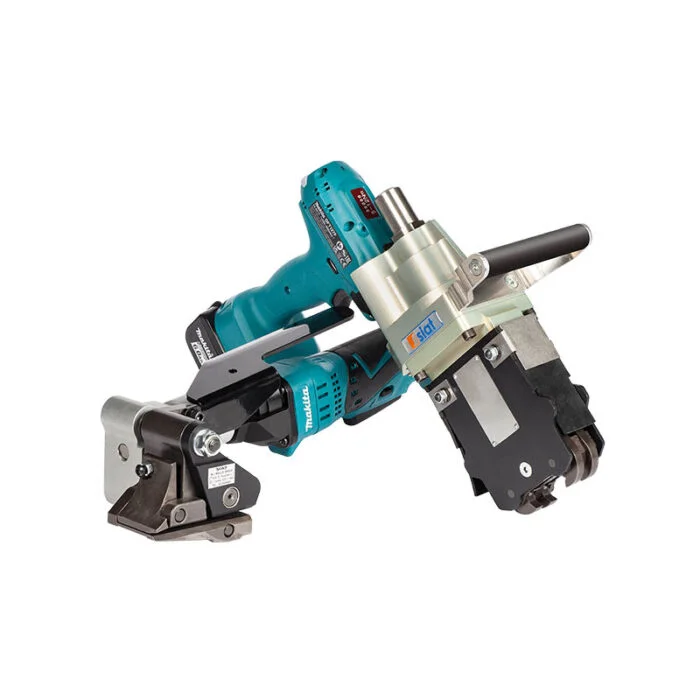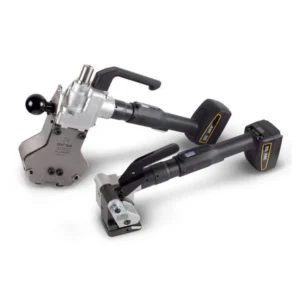Best steel strapping tensioner in Dubai /Hadanco

steel strapping tensioner, Steel strapping tensioners are essential instruments in a variety of sectors, used to secure items during transportation and storage. These devices keep steel straps securely wrapped around shipments, pallets, and other things, providing stability and preventing damage during transit. In this article, we will look at the many types of steel strapping tensioners, their applications, and how they help with effective and safe load control. Whether you work in shipping, manufacturing, or construction, understanding these techniques will help you enhance your packaging and security procedures.
Understanding the Basics uses of Steel Strapping Tensioners
Steel strapping tensioners are critical tools used in a variety of industries to secure and stabilize loads during transit and storage.
Understanding their basic functions can aid in the safety and integrity of packed items.
Here are some important considerations of employing steel strapping tensioners.

steel strapping tensioner
Secure Heavy Loads
Steel strapping tensioners are built to withstand heavy-duty strapping jobs, making them perfect for securing large, heavy items.
They provide the necessary tension to guarantee that steel straps are securely fastened around the cargo, preventing movement and damage during shipment.
Tightening the strap
The primary purpose of a steel strapping tensioner is to impart tension to steel strapping.
This procedure entails tightening the strap around the load to the proper tension level.
Cutting the Strapping
Many steel strapping tensioners include inbuilt cutting mechanisms that allow users to cut extra strapping once the necessary tension is reached.
This innovation streamlines the strapping process and guarantees a clean, exact cut.
Sealing the Strapping
After tensioning and cutting the steel strap, it must be sealed to ensure that the tension is held securely.
This is normally accomplished with a separate sealing tool or a combined tool that does both tensioning and sealing.
The seal ensures that the strap stays tight and the load is secure.
Preventing Load Shift
The proper usage of steel strapping tensioners helps to avoid load movement during transit.
Keeping the load tightly bonded reduces the chance of goods moving, shifting, or falling.
see more Steel Strapping Tools
Exploring Different Types of Steel Strapping Tensioners
Steel strapping tensioners are crucial instruments in a variety of sectors for securing and stabilizing items during transit and storage.
Steel strapping tensioners are available in a variety of designs to satisfy specific requirements and applications.
Here’s a detailed look at the types of steel strapping tensioners that we at Hadanco could provide you with.
💥Manual Steel Strapping Tensioners💥👈 Buy now
Manual tensioners are the most basic type, which can be operated by hand.
They are best suited for small to medium-sized loads and low to moderate volume applications.
- Advantages include ease of use and portability.
There’s no requirement for an external power source.
Cost-effective for small businesses.
- Application:
Small companies.
On-site strapping is used when power supplies are unavailable.
Light to medium-duty applications.
💥Electric Steel Strapping Tensioners.💥👈 See more
Electric tensioners are powered by electricity and provide precise and constant tensioning.
They’re ideal for medium- to high-volume applications.
- Advantages
Consistent and customisable tensioning.
reduces operator fatigue.
Suitable for a variety of load sizes.
- Usage:
Distribution centers.
Manufacturing facilities.
Any operation where consistent tensioning is required.
read more : the steel strapping tools
How to Properly Use a Steel Strapping Tensioner
A steel strapping tensioner used correctly to tie items securely and safely. Here’s a full guide for using a steel strapping tensioner:

steel strapping tensioner
Preparation.
Wear gloves and safety glasses to keep yourself safe from sharp edges and potential injury.
- Strapping Material:
Ensure that you have the appropriate steel strapping for the load.
The strapping should be appropriate for the weight and type of load secured.
Position the Strapping.
- Wrap the Strapping:
Secure the steel strapping around the cargo, ensuring it is snug but not too tight.
Overlap the ends of the strapping by 6-8 inches. Make sure the straps flat and not twisted.
Insert the Strapping into the Tensioner.
- Feed the Strapping.
Place both ends of the overlapped strapping in the tensioner.
Typically, the tensioner will have slots or guides to assist with proper strapping positioning.
- Position correctly:
To prevent slippage, ensure that the strapping properly positioned in the tensioner.
Tension the Strapping.
- Operate the Tensioner:
Start cranking the tensioner handle to tighten the straps.
As you ratchet, the tensioner will tighten the strapping around the load.
Achieve the desired tension.
Continue ratcheting until the strapping is tight enough to hold the load without harming it.
- Seal the Strapping
- Apply the seal:
Place a steel seal over the overlapped part of strapping.
The seal should cover both layers of strapping.
- Crimp the Seal:
With a sealing tool, crimp the seal tightly around the strapping.
This step is critical to preventing the strapping from coming free.
Cut the excess strapping.
- Use the Cutter:
If your tensioner has an integrated cutter, use it to remove the extra strapping.
If not, use a separate cutting tool to reduce any excess.
- Ensure a Clean Cut:
Make sure the cut is clean and near to the seal to avoid sharp edges that could represent a safety risk.
Final adjustments and inspection.
- Check the tension:
Ensure that the strapping still tightly wrapped around the load.
Inspect the seal. Check that the seal correctly crimped and holds the strapping securely.
- Safety Check:
Double-check for sharp edges and smooth them off if necessary to avoid harm during handling.
Top Tips for Adjusting the Tension on Your Steel Strapping
- Consistent Tension:
Use consistent tension to prevent unequal pressure on the load, which could create instability.
- Regular Maintenance:
Maintain and examine your tensioner on a regular basis to ensure its proper operation.
To maximize safety and efficiency, ensure that all operators have received sufficient tensioner and strapping training.
- Environment:
To avoid accidents and maintain perfect performance, keep the tensioner clean and clutter-free.
All in all, steel strapping tensioners are critical instruments for securing cargo in a variety of industries. These devices help avoid damage during shipping and storage by ensuring that steel straps tightened and firmly connected. Understanding the various types of tensioners and their respective applications can significantly improve the efficiency and safety of your load management processes.
Whether you use manual, pneumatic, electric, or battery-powered tensioners, selecting the correct equipment for the job is critical to attaining consistent and successful strapping. And to get the best steel strapping tensioners you can contact our team at Hadanco now.
